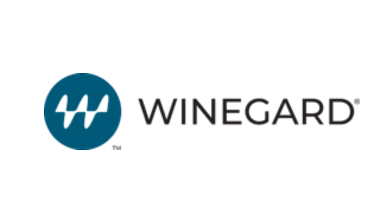RV Connectivity Trends: What To Know
From younger RV buyers to full-time travelers, demand for reliable internet is soaring. Learn what’s new in RV connectivity and how to meet customer needs.

For most travelers, staying connected on the road isn’t a “nice to have” anymore — it’s a requirement, whether they’re working remotely or simply want to watch their favorite streaming service. To get the latest on RV connectivity, RV PRO spoke with four industry experts.
What’s new & innovative in RV internet/connectivity products?
Nathan Popp, vice president of revenue operations, TravlFi: RV connectivity has moved beyond single-source solutions to smart, flexible systems that blend satellite, 4G/5G cellular and Wi-Fi boosting. Portable, battery-powered devices now make it possible to stay connected while fully off-grid, and multicarrier technology ensures travelers can tap into the strongest available network throughout their travels. Many new RVs are also being built connectivity-ready, with preinstalled wiring for satellite, solar integration and app-based controls for a truly mobile smart home experience.
Collin Quinn, connectivity systems engineer, Trek Systems: The Peplink Antenna MAX S is a brand-new 5G and Wi-Fi antenna that includes a housing for both a Starlink antenna and a mobile router. The router mounting negates cable signal loss, and the Starlink integration saves roof space. Peplink routers can combine Starlink and cellular WANs for high-speed, high-reliability internet in remote locations.
Steve Loving, business development director, KORE Wireless: The launch of Winnebago Connect, powered by KORE Wireless, Robo and Ericsson, represents a major leap forward in RV connectivity. Instead of relying on multiple separate systems and cumbersome equipment, this platform integrates Internet of Things (IoT), 5G and automation into a single, seamless ecosystem. It includes dual-carrier 5G with in-vehicle and around-vehicle Wi-Fi via Cradlepoint routers; smart energy management for extended off-grid stays; remote climate control to keep passengers and pets comfortable; real-time GPS tracking and smart notifications for safety and convenience; [and] over-the-air software updates. It’s not just internet — it’s an always-connected, intelligent RV that adapts to user needs.
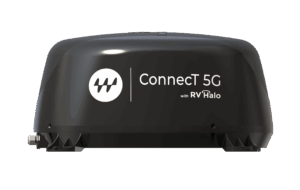
Keith Larson, director of sales — RV aftermarket, Winegard Co.: The growing 5G coverage has led to better internet coverage and at greater speeds from cell towers. Also data plans are becoming more price competitive with unlimited data limits to give customers great connectivity for all of their connectivity needs, whether working on the road, streaming their favorite shows or surfing the internet. Satellite internet has also changed landscape to get connected even in remote areas, and many accessories have been created to use Starlink on RVs.
What impact has a younger buyer demographic & the increased popularity of off-grid camping & full-time RVing had on RV connectivity?
Popp: Millennials and Gen Z buyers, many working remotely, expect fast, reliable internet anywhere. Their interest in boondocking and full-time RV living has driven demand for mobile, self-powered, high-performance connectivity that supports both work and streaming away from RV parks.
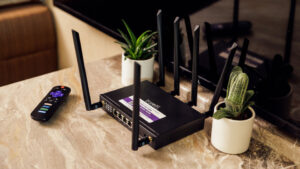
Quinn: Connectivity is now considered a core feature rather than an afterthought. In the past, RV internet was more of an optional add-on, often only in the form of a Wi-Fi booster for campground internet. Now, many younger RVers are working or streaming on the road, so maintaining a stable internet connection is a high priority. Since they require business-class reliability, multi-WAN routers are becoming more common in the RV world. These routers utilize multiple cellular connections and/or Starlink for redundant WAN links, increased speed and improved connection quality. For full-timers and off-grid campers, power efficiency and solar energy is also very important. This results in a need for more efficient devices and more sophisticated energy systems.
Loving: Younger RV buyers and full-time RVers expect their rigs to be as connected as their homes. Streaming entertainment, remote work, telehealth and smart home-style controls are becoming baseline expectations. The surge in boondocking and off-grid travel means connectivity must now extend beyond campgrounds with public Wi-Fi — into national parks, rural back roads and remote work spots. Winnebago Connect directly addresses this by combining nationwide 5G coverage with intelligent power management, allowing travelers to stay online, productive and entertained while off the grid.
Larson: Younger, tech-savvy owners are driving new demands to stay connected as an essential, expected feature of camping both on- and off-grid. Manufacturers are responding by preinstalling or prepping RVs for Wi-Fi, 5G LTE and Starlink, app-controlled systems and smart devices.
What do dealers need to be aware of or educate their customers about to ensure their connectivity needs are met?
Popp: Dealers should set realistic expectations about coverage, speed and power needs; explain hybrid setups (satellite with cellular backup); and teach customers how to manage power, secure their network and choose the right plan for their travel style.
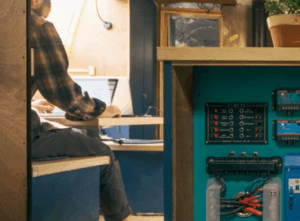
Quinn: Dealers should set realistic expectations for internet coverage. No single connection will work everywhere. Starlink suffers with inclement weather and physical obstructions, and cellular internet depends on your carrier’s coverage. Multi-WAN routers can use multiple connection types to fill coverage gaps. Customers should also be educated on how failover is handled. Peplink routers enable the use of Hot Failover, which switches between a failing WAN and a backup WAN. This is essential for internet use cases like VOIP, video streaming and video conferencing. If this level of reliability is not necessary, standard failover may be sufficient. Most mobile routers have two or more SIM slots. When the primary SIM loses signal, the router automatically switches to the backup SIM, but the connection is not seamless. The downtime can be up to several minutes. Multicarrier SIM cards also fail over in this way, but only take up a single SIM slot. Knowledge of data plan types is also very important. It is critical to make sure the customer chooses a router-friendly SIM. If a phone plan’s SIM is used, the connection may be heavily throttled, and in the worst case, it may be completely cut off and the router blacklisted. Most carriers will prompt the customer to enter the device’s IMEI when purchasing a plan to ensure it is valid for that plan.
Loving: Dealers should help customers understand the difference between campground Wi-Fi, mobile hotspots and integrated 5G/IoT systems. [They should also] advise on data plans, carrier options and coverage maps, especially for those who travel in rural or mountainous areas, [and] highlight how features like smart energy management can keep internet access running longer off-grid.
Larson: Dealers need to educate customers on the differences and pros and cons of 4G, 5G LTE and satellite internet, and the costs of hardware and services so the customer can pick the right product and plan for their needs.
What is a challenge that OEMs, dealers & end users face regarding RV connectivity?
Popp: According to a recent RVIA survey about purchase intentions, Wi-Fi/connectivity is a top 3 most important feature when considering the next RV purchase. However, customer needs are very different and technology is changing quickly, which makes it difficult for OEMs and dealers to stay ahead of the latest tech and/or provide a one-size-fits-all solution. Balancing coverage reliability, cost and simplicity is the biggest challenge. Different terrains, trees and weather impact connectivity, and managing multiple systems can overwhelm less tech-savvy users.
Quinn: The biggest issues facing everyone in the chain are the variables outside their control. A user’s ability to achieve a stable high-speed internet connection depends on many things, including cell tower locations, network congestion, physical obstructions, satellite visibility, carrier throttling and deprioritization. OEMs may have difficulty finding a one-size-fits-all package that works for every travel style and location. Dealers have the unenviable position of trying to explain the complex technology and its shortcomings without overwhelming the customer. And users can face frustration when their expensive equipment fails to perform as expected.
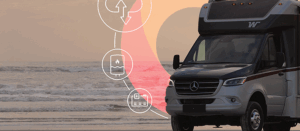
Loving: Coverage gaps remain a real challenge, especially in extremely remote or mountainous regions. Even with dual-carrier 5G, physics still wins in no-signal zones. Managing data usage and plan costs is another hurdle, particularly for full-time RVers who stream heavily or work remotely. From the OEM/dealer side, integrating advanced connectivity into RVs without adding complexity for the end user requires robust partnerships.
Larson: Challenges are there is not always a solution that works or can keep [RVers] connected in every situation. Satellite internet can have issues when blocked to signal, and cellular can have issues if in really remote areas, so it is different than a home that is constantly wired for access constantly.
What else should our readers know about RV connectivity products?
Popp: The most dependable RV internet comes from combining multiple connection types. For example, using a satellite service for remote or off-grid areas, paired with multicarrier 4G/5G internet like TravlFi for travel days or locations with strong cellular coverage. This hybrid approach ensures [RVers] have redundancy when one network is down or congested, maximizes coverage across different terrains and allows [them] to switch between options based on where [they] are and what [they] need to do.
Quinn: There’s a wide range of connectivity options to fit many sets of customer needs. The challenge is catering a solution to their requirements.
Loving: Today’s RV connectivity is about more than internet access — it’s about creating a smart, self-aware vehicle that enhances safety, comfort and sustainability. Platforms aren’t just for delivering streaming and browsing capabilities but also to monitor and optimize power, water and climate systems; provide security and location tracking; enable remote diagnostics and dealer support; future-proof the RV with scalable hardware and software that can evolve with new technologies. In short, RV connectivity is no longer an accessory — it’s a core part of the RV ownership experience, and those who embrace it are set to attract the next generation of RVers.
Larson: 5G LTE products and services are getting better with price of hardware and services. There are many options to get 5G products from roof-mounted, 5G upgrades to a preinstalled prepped antenna to a desktop router with built-in 5G. Winegard 5G products now have available a 5G T-Mobile unlimited data plan. … Also any 5G Winegard product purchased qualifies for a free month of unlimited T-Mobile data plan rebate.


